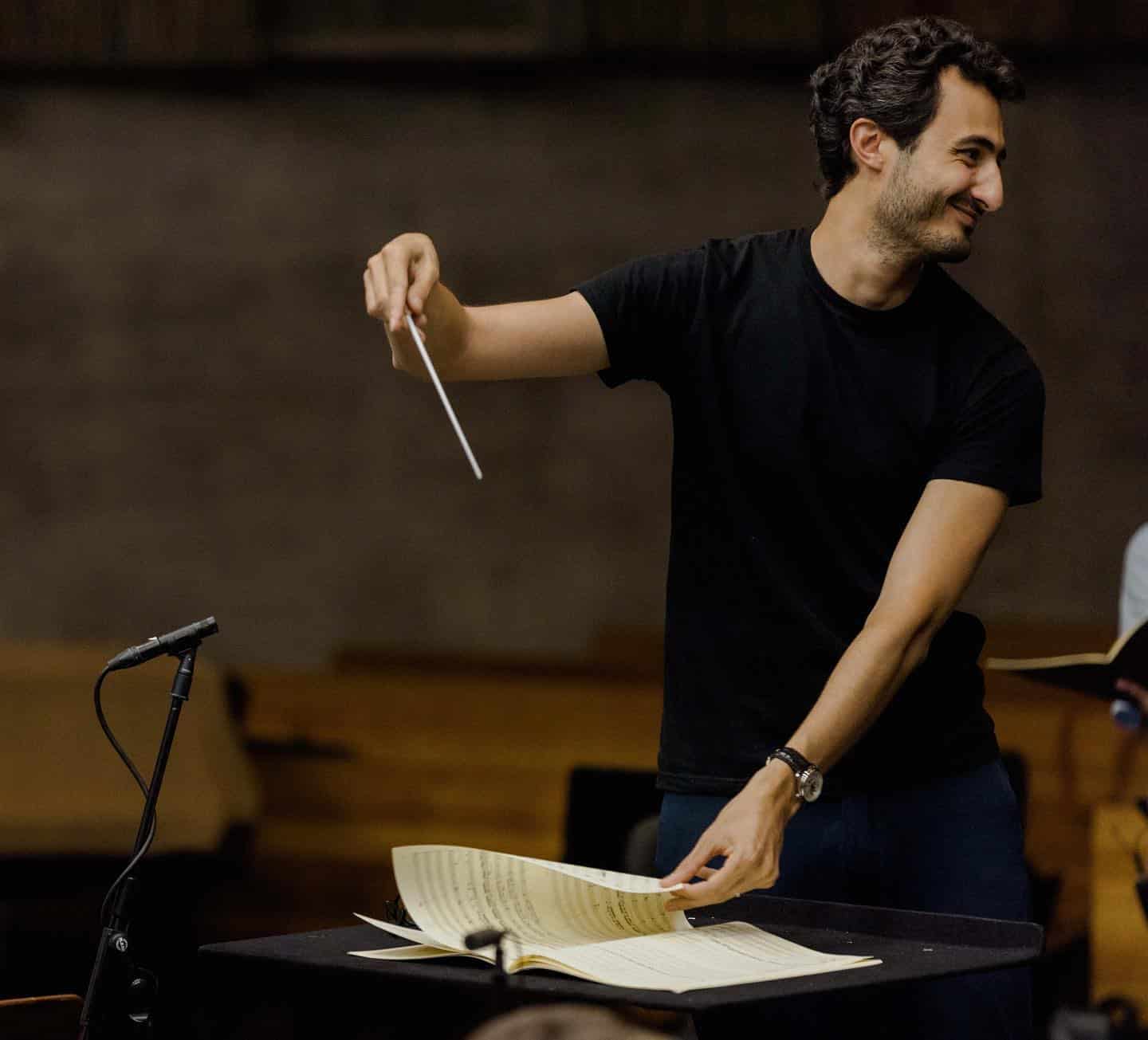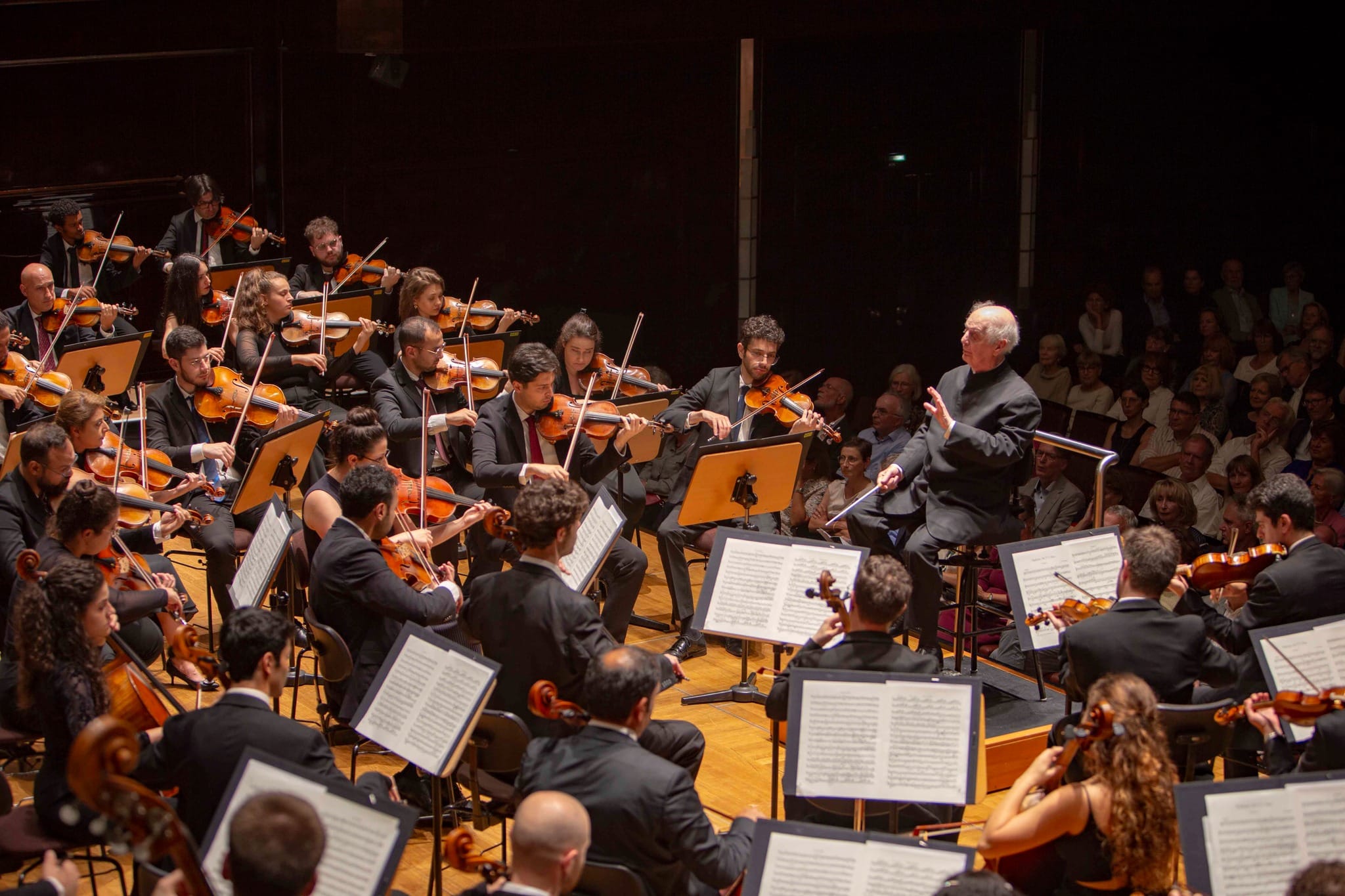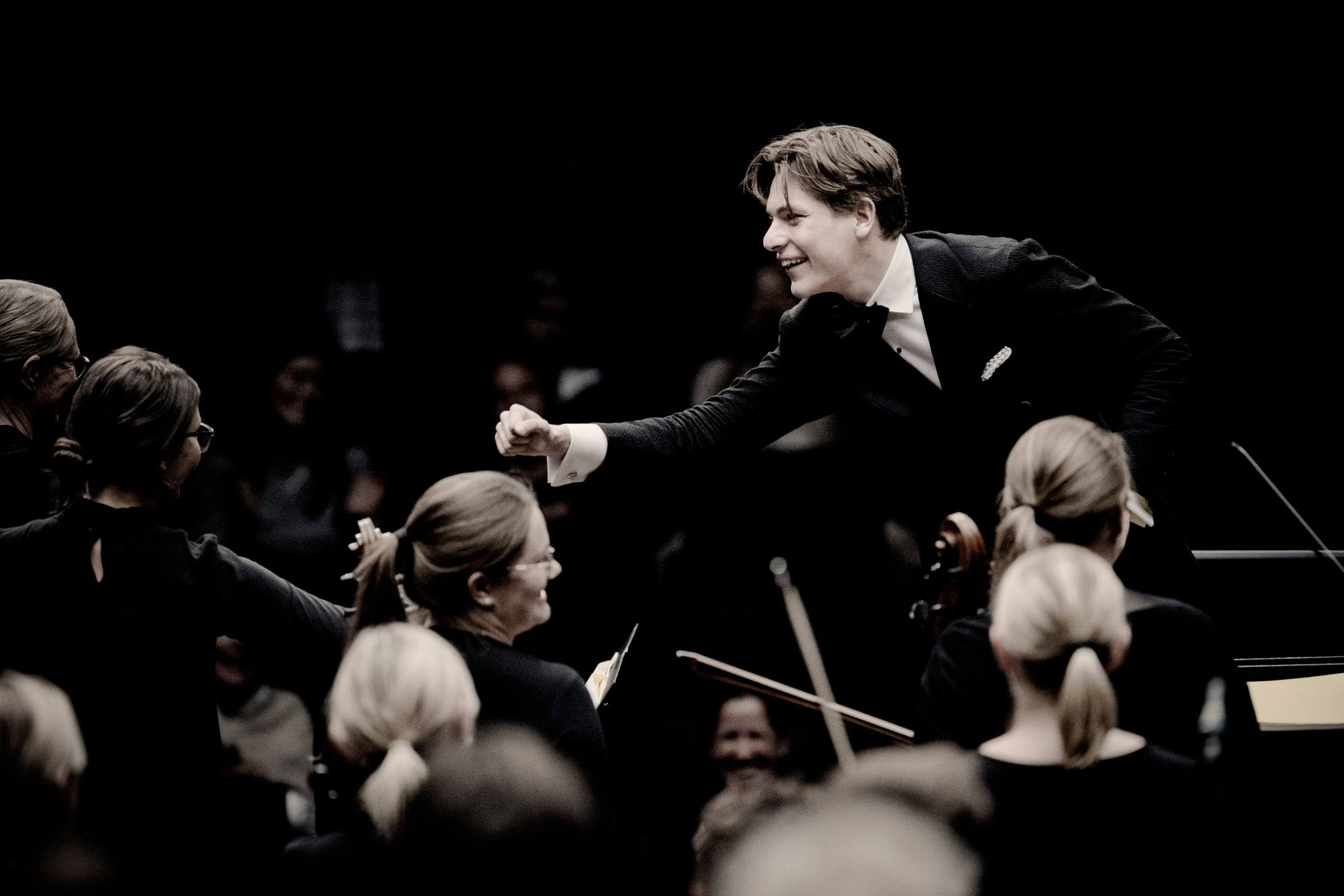Don’t ever get this close to the Berlin Philharmonic
main
The lady at the end of the row has a problem with Kodaly’s g Dances of Galanta, conducted by Ivan Fischer.
Freeze-frame by Christoper Russell from a streamed performance.


The lady at the end of the row has a problem with Kodaly’s g Dances of Galanta, conducted by Ivan Fischer.
Freeze-frame by Christoper Russell from a streamed performance.
Boston Symphony pulled one out of the fire…

The Berlin State Opera communicated tonight that its…

Zachary Woolfe, chief music critic of the New…

From NPR LA: The Long Beach Opera has…

Session expired
Please log in again. The login page will open in a new tab. After logging in you can close it and return to this page.
It’s not just the BPO. Any orchestra is incredibly loud at that range. It’s not (necessarily) a question of not liking the music, it’s a question of physical pain. Some people have a higher pain threshold than others. Hopefully she will come back, and hopefully will be able to get tickets far away from the orchestra.
(P.S. you usually get the most complete aural picture of an orchestra’s sound from the back of the hall.)
True. And with some music, the best location is in the foyer.
Often been amazed at how those seats are so open onto the stage. I was also mightily disappointed that in the ‘Welcome Anong Us’ celebration concert for Refugees and helpers, a metal barrier was put up between those seats and the stage. You might say that because the audience may not necessarily normally attend a concert that this was a sensible precaution, however for me it sent out entirely the wrong message.
Incidentally, the audience was by far the most engaged audience I have ever seen at a concert in the Philharmonie.
I, too, have a problem with the Dances of Galánta: it’s not a very good piece. Zoltán Kodály may have had all the energy of Bartók, but he had about 2% of the talent.
I really find that very unkind. K is definitely good for 6,5% and possibly more.
Well, I LOVE the piece! More for the rest of us!
Then you very clearly aren’t a clarinetist….we LOVE that piece! (Or perhaps you are, and you don’t…)
A colleague of mine once took her young daughter to a concert at the Großer Musikvereinssaal where they ended up sitting right behind the double bass section of the Vienna Symphony Orchestra. It changed the kid’s life. All she wanted to do was learn the double bass (then roughly 4-5 times her size), and she has 🙂
Great story!
I’ve had similar experiences in the Disney Hall orchestra view section, my preferred spot when I attended LA Phil concerts. Not due to volume but to not liking the piece on offer. Having a couple of soft foam earplugs handy helped manage the problem.
Attending a concert ‘con sordino’ (earplugs) is the best way of avoiding ear- and brain- damage. Also, it helps against depression and alcoholism. When the Russian composer Alexandr Glazunov was appointed director of the St Petersburg conservatory, he was obliged to attend all student concerts, which he only could bear by stuffing his ears with big wadding plugs, just minutes before entering the hall and visible for all the attending students and family. This protected him against wodka-sprinkled postconcert depression.
I didn’t have Glazunov’s problem of having to go to so many concerts. Fortunately, I seldom had to put the earplugs in when I did. They can only do so much since sound gets through in other ways. I’ve only left the hall once mid-piece when the plugs couldn’t blunt the onslaught of Andriessen.
Glazunov should have hired better teachers or he should have raised the standard of acceptance. But I guess he wanted the income from the students. (Yes, I am being sarcastic)
“This protected him against wodka-sprinkled postconcert depression.”
Apparently, it didn’t help much:
http://www.spectator.co.uk/2014/10/the-drunk-conductor-who-ruined-rachmaninovs-career/
Kent Nagano customarily warns the audience from the stage in Montreal before pieces in which musicians play very loud very close to audience members (for instance, when the OSM did Beethoven’s Battle Symphony, with the “cannons” and fanfares on the first balcony, or before Janacek’s Glagolitic Mass, again with brass on the first balcony). A nice gesture, in my view.
Yes it is, but it would have been even nicer if he did not programmed Battle Symphony at all, considering how embarrassing for our memory of the great composer should be every reminder that he actually wrote such a trashy piece.
I believe there is some value to programming such pieces now and then, just to satisfy the curiosity of audience members who know Beethoven was a great composer but wonder: how bad could this famous-for-being-bad piece really be? If you’re told over & over again “oh, you don’t want to hear that, it’s terrible,” it’s likely to pique your curiosity (well, maybe not your curiosity) rather than stifle it.
Also to give a chance to reassess — if only to reaffirm — commonly-held opinion of the piece.
One can imagine that there is a certain amount of curiosity-quenching “value” in a c-major scale too, but I hope that before scheduling another performance of Battle Symphony, musicians of Kent Nagano’s quality will consider the fact that there is a virtually unlimited treasure trove of much better music, including just about everything else written by Beethoven himself, as well as literally hundreds if not thousands of pieces by other composers some of which rarely if ever get to be performed and heard in live concerts.
Had a similar experience in Washington, DC during an NSO performance of Bruckner’s 8th, conducted by Eschy. Way, way too loud. The fellow in front of me plugged his ears, and this was in the second level up. Not a good performance, btw.
I attended a performance of Tchaikovsky 4 in the Concertgebouw last year given by the visiting Tokyo Metropolitan Symphony Orchester. The concert was being filmed and seats behind the platform were not filled, maybe 6-8 people in pairs – presumably, any others had been ‘upgraded’ to Stalls seats. During the finale, one man, seated towards the back of the area clamped his hands to his head during each repetition of the main theme. I pity the poor film editor trying to get decent shots without catching him in vision…
The lady in distress is right next to the percussion section of the orchestra. The BPO has a huge sound depending on the piece it’s playing that sound at times reaches a crescendo which is way above 70 decibels the maximum tolerance of the human ear. Next time it’s very wise to keep a distance. The BPO in my view is the greatest orchestra I have ever watched.
In my experience, earplugs are an essential item of health and safety equipment at any performance of Messiaen’s Turangalila symphony featuring Cynthia Millar and her dreadful jumble of ‘ondes martenot’ electronics.
70 decibels is quite safe even for long periods. The average ear can stand 85 decibels for eight hours, 90 for four hours, the time before hearing is damaged halving every 5 dBs.
I’m tired of the of the oft-used and incorrect phrase “reaching a crescendo” since in musical terms crescendo is a process, not a conclusion.
Technically then I rest my case.
I wonder what people’s reactions would be if NL had claimed this picture was taken during a performance of Beethoven’s 5th…
My response would probably be that during that symphony’s final movement, if seated that close to the orchestra, I would have most likely assumed a pose that is very similar to that of the woman in the picture.